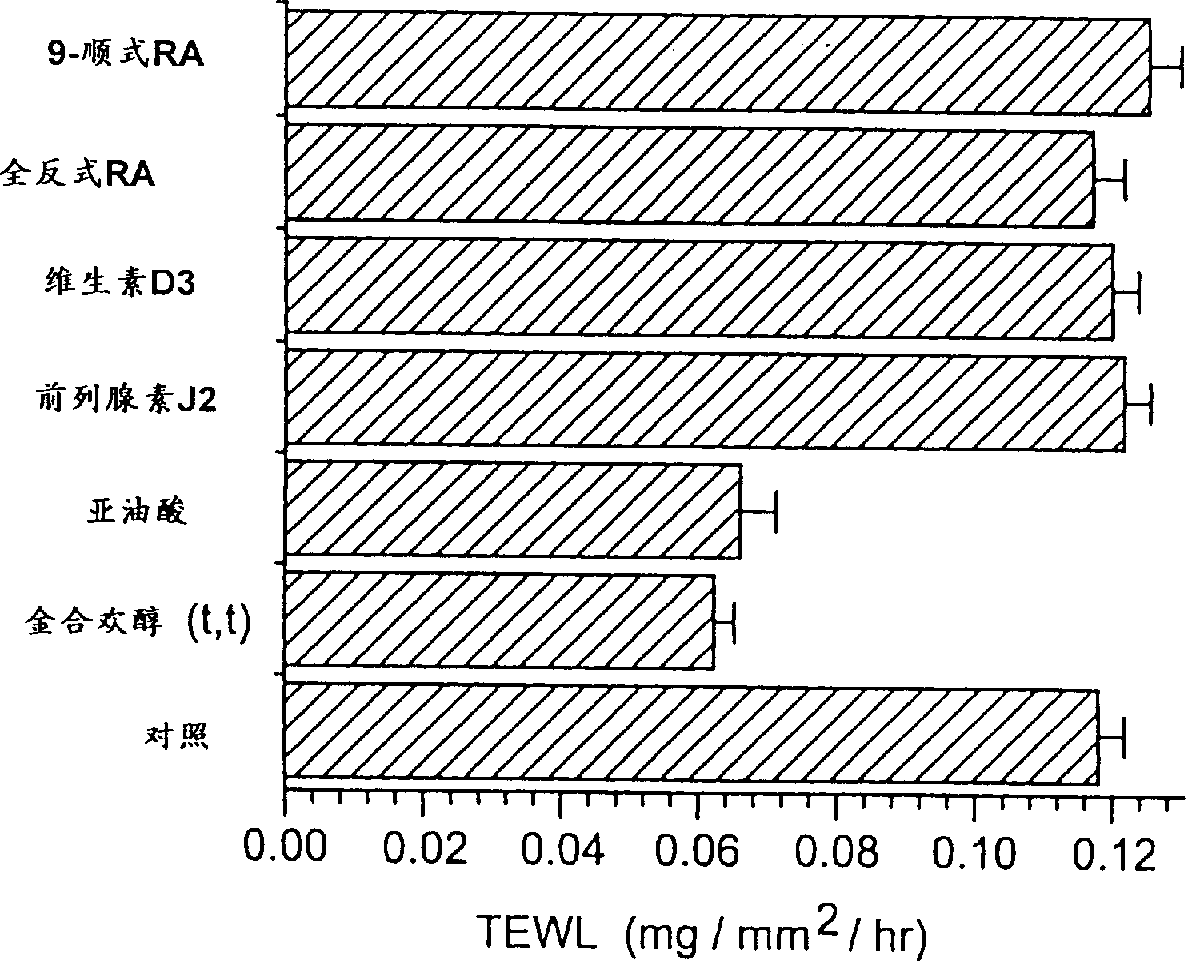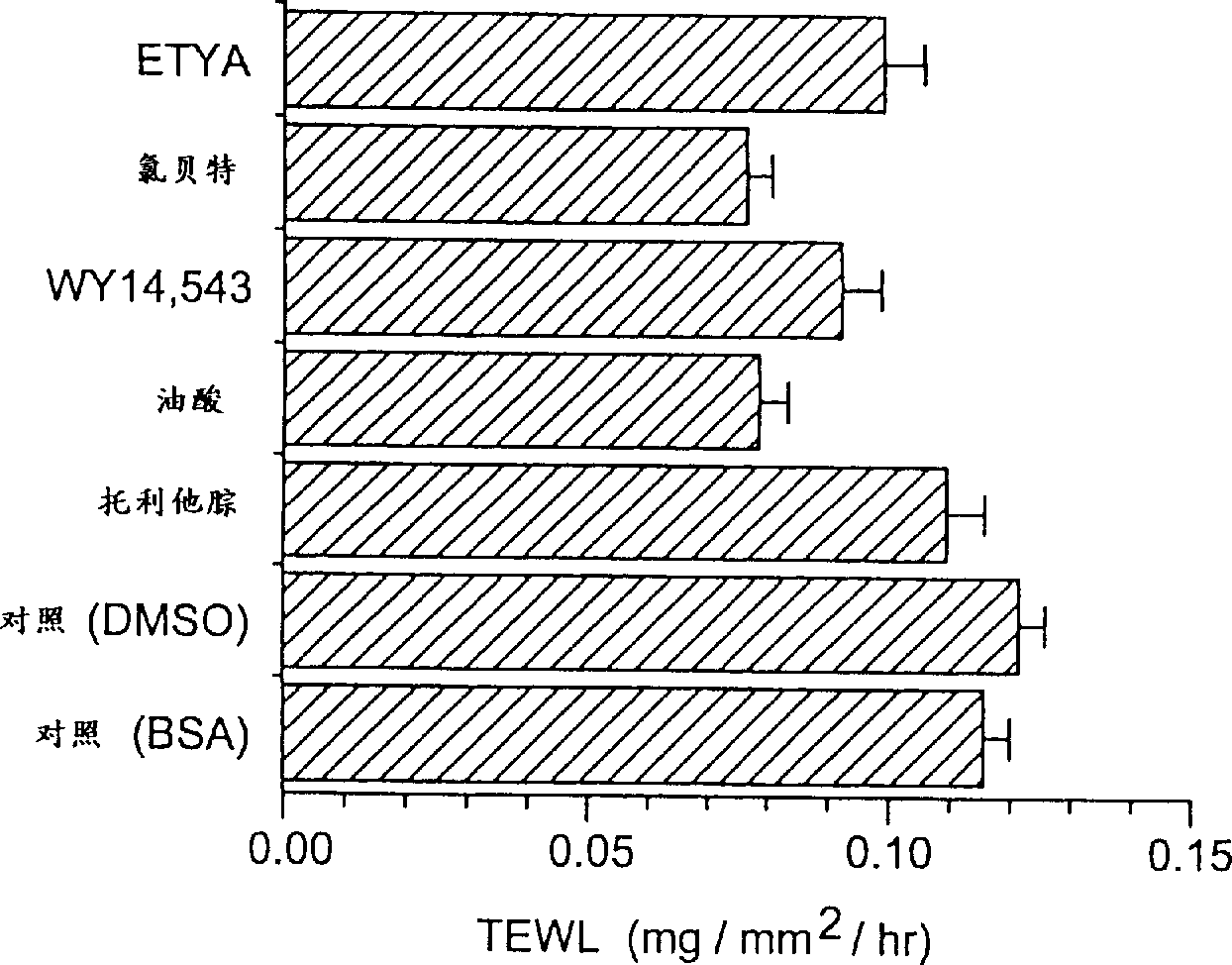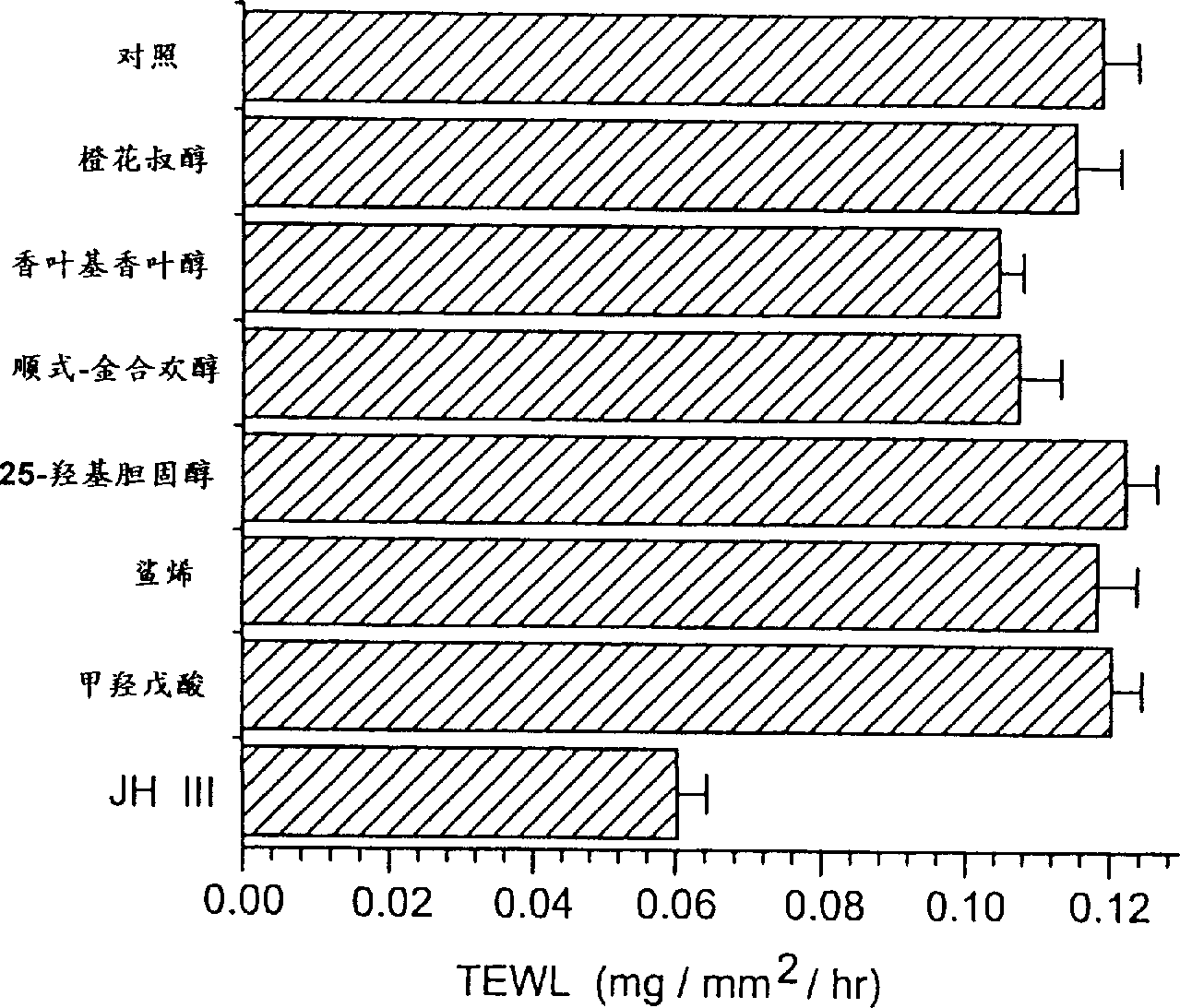Use of FXR, PPAR 'alpha' and LXR 'alpha' activators to restore barrier function, promote epidermal differentiation and inhibit proliferation
A technology of activator and epidermis, applied in the direction of organic active ingredients, medical preparations containing active ingredients, skin diseases, etc., can solve problems such as no effect
- Summary
- Abstract
- Description
- Claims
- Application Information
AI Technical Summary
Problems solved by technology
Method used
Image
Examples
Embodiment 1
[0130] The experiment in this example proves that not all RXR activator heterodimers can promote barrier development. Activators of three specific receptors—retinoid receptor, vitamin D receptor, and peroxisome proliferator-activated receptor gamma (PPARγ)—were used and proved negative.
[0131] Previous studies have shown that full-thickness skin of rats with a gestational age of 17 days exhibited lamellar bodies in granulosa cells secreted in the stratum corneum space after 2 days of culture, but as in 19-day-old rats in utero Like mice, the epidermis lacks a mature lamellar membrane structure and a competent barrier. Hanley, K., et al., "Epidermal Barrier Ontogeny: Maturation in Serum-Free Medium and Promotion by Glucocorticoids and Thyroid Hormones but not Selected Growth Factors", J. Invest. Dermatol. 106: 404-411( 1996). In contrast, the stratum corneum, whose barrier function is equivalent to that seen in mature epidermis, is usually formed by culture no later than 4 ...
Embodiment 2
[0141] The experiments reported in this Example demonstrate that activators of PPAR[alpha] promote barrier development, whereas activators of other PPAR subtypes do not.
[0142] An example of a PPARα activator is linoleic acid, figure 1 TEWL values of explants after 2 days of incubation in 300 μΜ linoleic acid are shown. In contrast to the four inactive activators discussed in Example 1 as well as the control group, linoleic acid significantly reduced TEWL (pfigure 1 middle).
[0143] The three currently known subtypes of PPAR are PPARα, PPARδ, and PPARγ. These isoforms are pharmacologically distinct and uniquely activated by different agents. Yu, V.C. et al., "RXRbeta: A Co-Regulator That Enhances Retinoic Acid, Thyroid Hormone, and Vitamin D Receptor Binding to Its Cognate Response Element," Cell 67: 1251-1266 (1991). To determine whether the promotion of barrier development was provided specifically by PPARα, the following various PPAR activators were tested:
[0144...
Embodiment 3
[0152] Experiments reported in this Example demonstrate that activators of farnesol X-activated receptors (FXR) promote barrier development, whereas farnesol, farnesol metabolites, farnesol metabolic precursors, or farnesol Other compounds similar to other metabolites of metabolic precursors did not promote barrier development.
[0153] see again figure 1 , farnesol is included in the bar graph showing TEWL values for 2 days of culture in 50 μM farnesol. In contrast to the four null activators discussed in Example 1 and the control, farnesol significantly reduced TEWL (p<0.005, n=8) to a similar extent as linoleic acid.
[0154] To determine whether the effects of farnesol on barrier development were mediated by FXR, the TEWL of several other compounds described in a manner related to farnesol or known to activate FXR were tested. Farnesol is produced from acetyl-CoA through a multistep metabolic synthesis, a key intermediate being mevalonate. As part of the pathway, meva...
PUM
 Login to View More
Login to View More Abstract
Description
Claims
Application Information
 Login to View More
Login to View More - R&D
- Intellectual Property
- Life Sciences
- Materials
- Tech Scout
- Unparalleled Data Quality
- Higher Quality Content
- 60% Fewer Hallucinations
Browse by: Latest US Patents, China's latest patents, Technical Efficacy Thesaurus, Application Domain, Technology Topic, Popular Technical Reports.
© 2025 PatSnap. All rights reserved.Legal|Privacy policy|Modern Slavery Act Transparency Statement|Sitemap|About US| Contact US: help@patsnap.com



